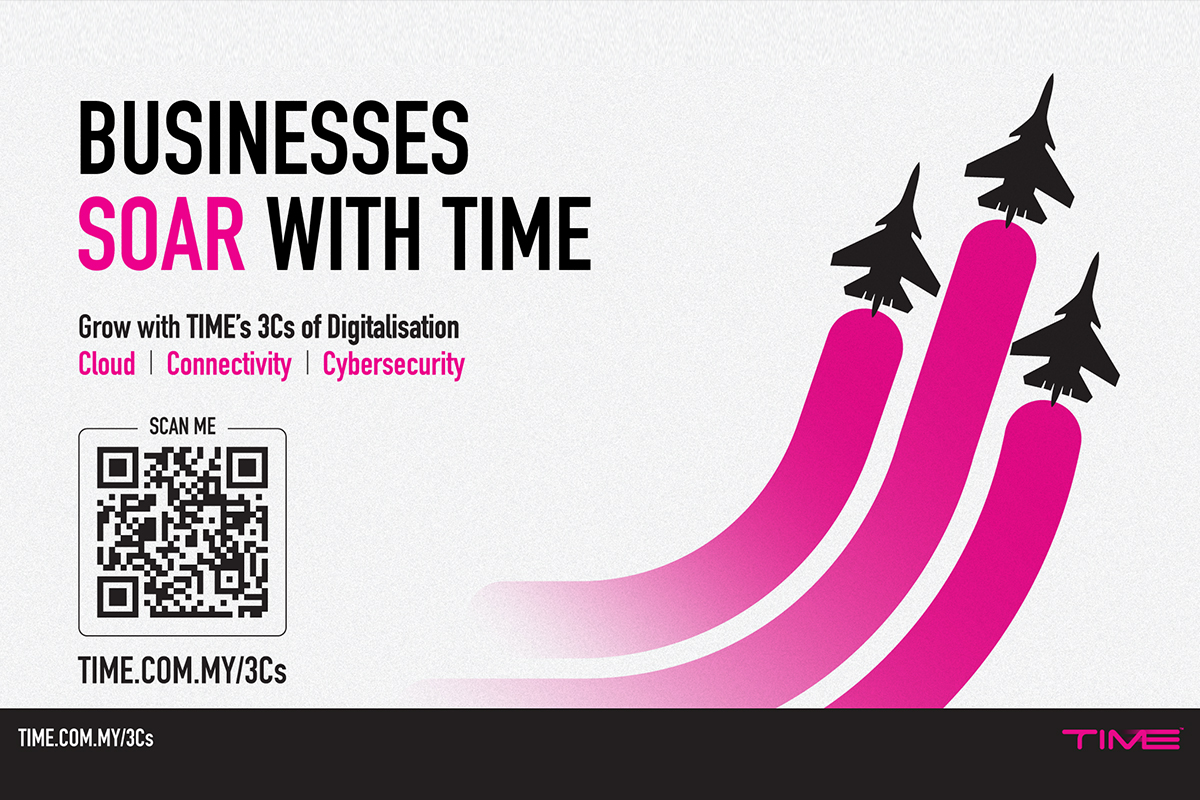
Driven by the urgency to adapt with radical shifts brought on by the global pandemic, the need for digitalisation to compose future businesses, and to form and reform dynamically has accelerated.
These numbers are reflective of the World Economic Forum's findings that ASEAN is now home to the fastest growing Internet market globally, adding approximately $1 trillion to the regional GDP over the next 20 years. However, according to World Bank data, Malaysian enterprises were underperforming in their digitalisation efforts compared to Thailand, Philippines, Vietnam and Singapore. In fact, it was reported that almost 77% of enterprises in Malaysia are still in the early stages of digitalisation.
The question remains - how can they leverage on adopting new digital technologies, upskilling their teams' capabilities and transforming digital architecture into an end-to-end ecosystem despite the ever-changing business and market dynamics?
Cloud-first strategy in digitalising businesses
Digital transformation uses modern digital technologies - including all types of public, private, and hybrid cloud platforms - to create or modify business processes, culture, and customer experiences. Based on a report by IBM Institute for Business Value, hybrid cloud adoption alongside digital transformation brought about unprecedented value to business, with hybrid and multi-cloud spend expected to increase by up to 17% by 2023.
A well-executed cloud strategy can help enterprises transform digitally, achieve competitive advantage, and ensure agility and a manageable total cost of ownership. Today, enterprises that move and integrate operations and workloads with TIME's Cloud Suite will gain from a robust interconnected ecosystem of unrivalled and reliable connectivity options built for long-term flexibility and seamless customer experience.
Housed in AIMS' hyperscale data centres, TIME's private and public cloud platforms can improve operational efficiency and agility for successful deployment of cloud strategies. As the only Malaysian telco with direct access to all major global cloud service providers, our NFVi-capable OpenStack and VMware cloud platforms paired with our high-performance network, gives you the flexibility, reliability and security to work without boundaries.
Digitalisation starts and ends with connectivity
In an increasingly digital world, connectivity should be a high priority to facilitate digitalisation efforts and effective collaboration. Yet, often, it is not the case. A survey done by Accenture and Cisco stated that 57% of organisations say their networks are only "mostly, somewhat or not at all ready" to support cloud and digital initiatives. As a result, enterprises are at a greater vulnerability to security risks, poor experience, and downtime - all of which impact digitalisation goals.
TIME's Converged Network ensures that enterprises can benefit from a secure and diverse network to drive seamless digitalisation. Backed by its first triple-certified MEF 3.0 network in Southeast Asia, enterprises can bank on TIME's reliable and resilient network to optimise connections locally and globally with Malaysia's first ever horizontal NFVi architecture.
With direct connections to major global cloud service providers like Amazon Web Services, Microsoft Azure, Google Cloud and Alibaba Cloud, and virtualised network services over cloud platforms, TIME simplifies network complexities to reinforce growing cloud adoption.
Safeguard your digital ecosystem
Although the wealth of information from digitalisation provides new opportunities for innovation and optimisation, it also renders enterprises vulnerable to data breaches, cyber threats and not to mention, the cost. According to a 2021 report by IBM and the Ponemon Institute, data breach costs rose from USD 3.86 million to USD 4.34 million, the highest average total cost in the 17-year reporting history.
Committed to innovation and compliant with global and industry security standards, TIME instils cybersecurity in its cloud, connectivity and data centre ecosystem to ensure digital resiliency for enterprises regardless of industry and size. Its strategic alliances with leading cybersecurity specialists such as Fortinet, IBM, Tecforte and LGMS facilitates greater intelligence sharing to help fortify digitalisation initiatives amid today's sophisticated threat landscape.
TIME's 3Cs of Digitalisation
Building an ecosystem with the right balance of technology, solutions and services is complex for any enterprise embarking on its digitalisation. Instead of spending time, effort and resources in building and piecing different parts of the ecosystem together from scratch, it makes more sense to partner with the right service provider with an ecosystem of required solutions and services.
This is where TIME comes in. An agile strategy that combines integration, innovation and technology-related assets, the capabilities of TIME's 3Cs of Digitalisation can give businesses an advantage to handle operations efficiently and astutely in the long run.
TIME, along with subsidiaries AIMS and AVM Cloud, is committed to providing enterprises with globally certified services, and the 3Cs framework will do just that. Regardless of digitalisation goals, the 3Cs offer a suite of customisable solutions and a digital foundation built on a comprehensive ecosystem to enable digitalisation across the spectrum from Cloud, Connectivity to Cybersecurity.
For more information, you can visit https://bit.ly/TIME3CsofDigitalisation and also download the eBook on their website to kickstart or accelerate your digital transformation journey today!




